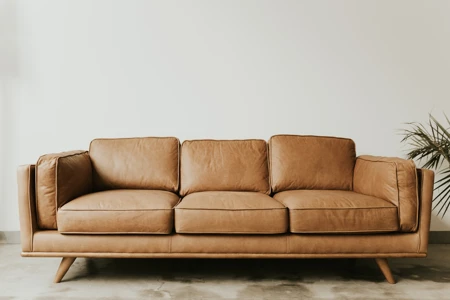Should you offer a rental property as furnished or unfurnished? We break down your options to help you decide which option suits your needs, as a landlord, best.
It’s one of the first things a landlord needs to decide when they invest in a property to let. Both options have advantages and disadvantages, from capital outlay requirements to the type of tenant you’re likely to attract.
Why tenants prefer unfurnished
Larger properties tend to be available as unfurnished, as older people and families are the most likely tenants. This means they’ll have their own furniture to bring with them.
Unfurnished properties are attractive to tenants with a long-term view of the property. They will feel more committed to staying in their home when they have invested money in furniture. It’s also a great way to add personal style to a place to really make it feel like home.
Tenants are also free to choose the white goods that suit their needs, such as a large fridge and freezer suitable for a family. If your unfurnished kitchen does not include an oven, it’s recommended that you stipulate any fitting of a tenant’s cooker is done by a qualified and approved fitter.
Why tenants prefer furnished
Other tenants prefer furnished properties if they need to be more mobile or are newly established in the property rental market. Those who have just moved out of their parental home, for example, won’t have a house-full of furniture ready to move in.
Furnished properties also make it easier to move house, as large removal vans won’t be required. That’s why mobile tenants, such as students and single professionals, are more likely to opt for furnished tenancies.
What about part-furnished?
There’s no strict definition of what part-furnished means, so it varies from house to house. Landlords can provide some basic furniture, such as wardrobes and sofas, but leave room for tenants to bring in their own bed or desks.
Many landlords offering part-furnished properties agree with new tenants which items will be left for the start of the tenancy. This is a flexible option that’s attractive to many tenants but does come with storage costs for the landlord for any furniture the tenant wants removed.
Inventory management
Make sure you or your letting agent complete a comprehensive inventory listing at the start of every tenancy. This must be checked at the end of the tenancy to make sure no furniture has been damaged beyond normal wear and tear, or entirely removed.
An inventory may be necessary for unfurnished properties too, as you can use it to list the state of provided equipment, fittings, walls, and flooring.
Fire regulations and electrical appliance testing
Offering a furnished or part-furnished property means you’ll need to adhere to certain regulations. Your soft furnishings, such as beds and sofas, must comply with fire safety regulations. You will also need to have an electric and gas safety check, with a certificate provided to your tenants.
You may also want to test any electrical equipment you provide with the property. This isn’t a legal requirement, but it can help with insurance claims as well as minimise the risk of malfunction when used by your tenants.
Items you must include (even unfurnished)
Regardless of whether you decide to provide a property furnished or unfurnished, there are some things you must include for your tenants.
Your property must have an Energy Performance Certificate with an E rating or above. You must also provide a heating source, such as central heating, with an annual gas safety check with certificate.
Your tenants must have access to clean running water, including hot water. They must also have access to a toilet and washing facilities.
Insurance implications
If you decide to offer a furnished property to your tenants make sure your landlord insurance covers all items. If you’ve been an owner-occupier and want to offer your previous home for rent, update your insurance details with this change – otherwise, your policy won’t cover any damage.
You don’t have to have contents insurance on your property but it is highly recommended. While you can’t claim for normal wear and tear on furnishings, insurance will cover you for any major damage and replacement items.
If you’re applying for a buy-to-let mortgage for your rental property, your mortgage lender may have specific requirements regarding insurance. Speak to our mortgage advisers in Doncaster for more information about insurance requirements for mortgages.
Find our more about our Mortgage Advice service in Doncaster

